Addiction specialists and other health professionals have a range of medication-based options for helping people affected by alcoholism. However, even when they receive one of these medications, some recovering alcoholics still lapse back into heavy alcohol consumption. In a study published in April 2014 in the journal Alcoholism: Clinical & Experimental Research, researchers from three German institutions assessed the effectiveness of individualized psychotherapy in recovering alcoholics who don’t respond sufficiently to medication-based treatment. Specifically, the researchers examined the usefulness of a form of individualized therapy called cognitive behavioral therapy.
What Medications Can Help Alcoholics?
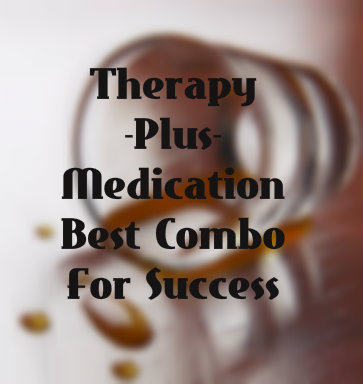 As of 2014, the U.S. Food and Drug Administration has approved a trio of medications for use in people recovering from alcoholism: naltrexone (Vivitrol), disulfiram (Antabuse) and acamprosate (Campral). Naltrexone is an anti-opioid medication that also blocks the chemical reactions responsible for triggering pleasurable sensations and alcohol cravings in drinkers. Disulfiram deters alcohol consumption by exaggerating the unpleasant chemical reactions associated with the breakdown of alcohol inside the body. Acamprosate makes chemical changes inside the brain that typically lessen the intensity of the alcohol withdrawal symptoms that commonly contribute to relapse risks in recovering alcoholics. Doctors also sometimes use a fourth medication, called topiramate (Topamax), not initially intended for use in alcoholism treatment. This anti-seizure compound also makes changes in the brain’s chemical environment that can help lower the odds that recovering alcoholics will take a drink.
As of 2014, the U.S. Food and Drug Administration has approved a trio of medications for use in people recovering from alcoholism: naltrexone (Vivitrol), disulfiram (Antabuse) and acamprosate (Campral). Naltrexone is an anti-opioid medication that also blocks the chemical reactions responsible for triggering pleasurable sensations and alcohol cravings in drinkers. Disulfiram deters alcohol consumption by exaggerating the unpleasant chemical reactions associated with the breakdown of alcohol inside the body. Acamprosate makes chemical changes inside the brain that typically lessen the intensity of the alcohol withdrawal symptoms that commonly contribute to relapse risks in recovering alcoholics. Doctors also sometimes use a fourth medication, called topiramate (Topamax), not initially intended for use in alcoholism treatment. This anti-seizure compound also makes changes in the brain’s chemical environment that can help lower the odds that recovering alcoholics will take a drink.
Cognitive Behavioral Therapy
Practitioners of cognitive behavioral therapy (CBT) help their patients/clients identify the underlying feelings, perceptions and actions that contribute to dysfunctional behavior in stressful situations. After making this identification, the individual can gradually learn a new set of feelings, perceptions and actions that don’t help trigger destructive behaviors. In the context of addiction treatment, CBT practitioners specifically help their patients/clients learn to do such things as anticipate the situations likely to increase the urge to use drugs or alcohol, learn how to cope with those situations without using drugs or alcohol, identify substance-using urges as soon as possible and accurately weigh the pros and cons of using drugs or alcohol.
Cognitive behavioral therapy is suitable for use in both individualized and group formats. In addition, the therapy can be used on its own or in combination with medication-based addiction treatment. In addition to alcoholism, forms of addiction addressed by CBT include addiction to the stimulants methamphetamine and cocaine, marijuana addiction and addiction to the nicotine contained in cigarettes and other tobacco products.
Usefulness In People Not Helped By Medication
In the study published in Alcoholism: Clinical & Experimental Research, researchers from Germany’s Freiberg University, Tubingen University and Heidelberg University used an examination of 109 individuals to assess the effectiveness of an individualized cognitive behavioral approach in helping recovering alcoholics who don’t receive enough benefit from medication-based treatment. All of these individuals were alcohol program participants who had experienced severe relapses back into drinking after taking an alcoholism medication, or after receiving a placebo that mimicked the appearance of an alcoholism medication. During the study, half of the participants continued to receive a standard combination of medication and medical symptom management. The other half received a combination of medication, medical symptom management and cognitive behavioral therapy conducted on an individualized basis.
The researchers analyzed the effectiveness of individualized CBT in all of the participants originally assigned to the therapy group, as well as the effectiveness of the approach in all of the participants who actively engaged in therapy. After completing these analyses, they concluded that the recovering alcoholics who actively engaged in the CBT process received a substantial benefit from the therapy and experienced improved treatment outcomes when compared to the recovering alcoholics who received only medication and medical symptom management.
The chief measurement used to compare the effectiveness of the combination of medication and individualized cognitive behavioral therapy to the effectiveness of medication without CBT was the number of days recovering alcoholics could successfully avoid experiencing another severe relapse. The authors of the study published in Alcoholism: Clinical & Experimental Research concluded that those program participants who actively embrace the goals of individualized CBT can potentially increase the number of days between relapses if they combine the therapy with an alcoholism medication. In line with this conclusion, they believe that alcohol programs may see significant improvements in their patients’/clients’ relapse-related outcomes if they offer access to non-medication-based therapy early in the treatment process.
Read How Do Recovering Alcoholics Respond To Baclofen?
Topiramate (Topamax) is a prescription medication originally developed as a treatment for certain seizure disorders. Doctors also sometimes prescribe this medication to people affected by other serious health issues, including alcohol addiction. In a study published in May 2014 in the journal Drug and Alcohol Dependence, researchers from two Dutch institutions explored the potential usefulness of topiramate as a treatment for people addicted to crack cocaine. These researchers found that only a small subset of individuals addicted to this form of cocaine clearly benefit from topiramate use.
How Does Topiramate Work?
Specific seizure disorders treated with topiramate include Lennox-Gastaut syndrome and certain forms of epilepsy. The medication helps people affected by these conditions by easing excessive nerve activity inside the brain. This same effect on brain function can also help stop migraine headaches from occurring.
When given to people affected by alcoholism, topiramate can diminish the severity of some of the symptoms associated with alcohol withdrawal, and can thereby help reduce the likelihood that a recovering alcoholic will lapse back into active drinking. Doctors may also prescribe the medication to people affected by medically serious forms of obesity. Available forms of topiramate include tablets and specially designed granules that users can release from a capsule and mix with food.
Topiramate And Cocaine Addiction
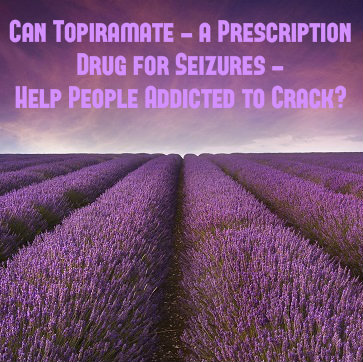 There is no medication in doctors’ treatment arsenals approved to help people affected by cocaine addiction. Instead, successful treatment typically depends on a form of behavior modification therapy called cognitive behavioral therapy or on other non-medication-based therapeutic options. Addiction researchers are actively looking for new medications that could help people addicted to cocaine, as well as existing medications that could be adapted for use in cocaine addiction treatment.
There is no medication in doctors’ treatment arsenals approved to help people affected by cocaine addiction. Instead, successful treatment typically depends on a form of behavior modification therapy called cognitive behavioral therapy or on other non-medication-based therapeutic options. Addiction researchers are actively looking for new medications that could help people addicted to cocaine, as well as existing medications that could be adapted for use in cocaine addiction treatment.
In a study published in October 2013 in the American Medical Association journal JAMA Psychiatry, a multi-university research team studied the effects of topiramate on 71 adults impacted by cocaine addiction. These researchers concluded that, compared to recovering addicts who don’t receive the medication while undergoing cognitive behavioral therapy, those who receive both topiramate and cognitive behavioral therapy experience improvements that include longer periods of cocaine abstinence (verified by an increased number of cocaine-free urine drug tests) and a reduced craving for further cocaine intake.
Potential Usefulness Of Topiramate In Crack Cocaine Treatment
Crack cocaine is powdered cocaine that has undergone an additional step of chemical processing. While the two forms of the drug have the same basic brain effects, crack only produces these effects for a relatively brief amount of time. This means that users of this form of cocaine may take the drug more frequently, and therefore may have greater odds of eventually experiencing the long-term brain changes associated with cocaine addiction.
In the study published in Drug and Alcohol Dependence, researchers from Parnassia Addiction Research Centre and the University of Amsterdam specifically investigated the potential usefulness of topiramate treatment in people addicted to crack cocaine. Thirty-seven participants in the study received a 12-week combination of topiramate and cognitive behavioral therapy, while another thirty-seven participants only received cognitive behavioral therapy.
The researchers mainly measured the effectiveness of topiramate treatment by comparing the rate of continued program involvement among recipients of the medication to the rate of continued involvement among those who did not receive the medication.
Variance Factors In Topiramate Use
In addition, they assessed such things as the regularity with which participants took their prescribed topiramate, the presence of negative side effects in the topiramate users, the ability to avoid using cocaine or other substances, the ability of medication users to interact in socially appropriate ways and the level of satisfaction that the topiramate recipients expressed toward use of the medication.
After completing their assessments, the researchers found that topiramate didn’t produce any serious side effects in the study participants. However, they also found that most of the medication recipients did not take it on a regular basis. In addition, they concluded that use of topiramate neither increased the length of involvement in cocaine addiction treatment nor generally contributed to a reduction in the consumption of cocaine or any other substance.
Critically, one group affected by crack cocaine addiction did benefit from topiramate use: those individuals simultaneously impacted by an addiction to opioid drugs or medications. This subset of addicts significantly lowered their cocaine intake while taking topiramate.
Importance Of Consistency Of Topiramate Use
The authors of the study published in Drug and Alcohol Dependence link the low level of topiramate effectiveness in crack cocaine addicts to highly inconsistent intake of the medication. Because many people in treatment don’t maintain their medication routines, the authors believe that topiramate may only play a relatively minor role in addressing the effects of crack cocaine addiction.
If you or a loved one is struggling with cocaine or any other addiction, call us now! We are here to help you!
Read More About The Addiction Treatment Uses For Topiramate
08 May 2014
Marijuana Withdrawal Eased By Sativex
Like people addicted to a range of other substances, people addicted to cannabis (marijuana, hashish or hashish oil) can develop symptoms of withdrawal when their brains don’t receive the expected amount of the drug. The presence of significant withdrawal symptoms can potentially stop a habitual cannabis user from successfully discontinuing his or her drug intake. In a study published in March 2014 in the American Medical Association journal JAMA Psychiatry, researchers from several Australian institutions investigated the potential effectiveness of a multiple sclerosis medication, called nabiximols (Sativex), as a treatment for people going through cannabis withdrawal. Nabiximols is derived from certain types of cannabis plants.
I Thought Marijuana Wasn’t Addictive?
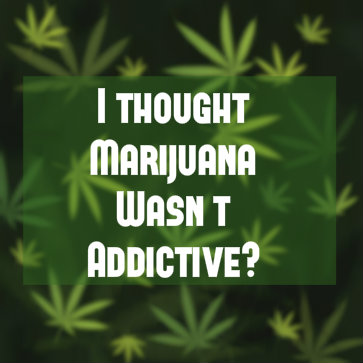 The American Psychiatric Association acknowledges cannabis withdrawal as a distinct and diagnosable mental health condition. People going through this form of drug withdrawal can develop symptoms that include a prominent urge to consume more cannabis, increased levels of anxiety, an unusually agitated or irritated mental state, a reduced ability to fall asleep or stay asleep and a reduced interest in food. As a rule, doctors consider officially diagnosing these symptoms when they substantially impair the day-to-day functionality of affected individuals or produce a notable decline in mental/emotional well-being. As of early 2014, there are no medications available in the U.S. designed to treat people affected by cannabis withdrawal.
The American Psychiatric Association acknowledges cannabis withdrawal as a distinct and diagnosable mental health condition. People going through this form of drug withdrawal can develop symptoms that include a prominent urge to consume more cannabis, increased levels of anxiety, an unusually agitated or irritated mental state, a reduced ability to fall asleep or stay asleep and a reduced interest in food. As a rule, doctors consider officially diagnosing these symptoms when they substantially impair the day-to-day functionality of affected individuals or produce a notable decline in mental/emotional well-being. As of early 2014, there are no medications available in the U.S. designed to treat people affected by cannabis withdrawal.
Nabiximols
Nabiximols is an oral spray chemically extracted from flowers harvested from a cannabis species known as Cannabis sativa. Rather than using plants grown through usual methods (which can have highly varying amounts of THC and other active ingredients), manufacturers of the medication use plants cloned in tightly controlled conditions. Compared to the THC derived from smoking cannabis, the THC contained in nabiximols produces its drug effects more slowly and also reaches a lower overall peak inside the bloodstream. Still, the medication has a fairly rapid impact and typically triggers noticeable effects in 15 to 40 minutes. Together, these properties make nabiximols a potential option for treating people affected by the autoimmune nerve disorder multiple sclerosis. As of 2014, the medication is not available in America; however, Canada and several European countries have approved its use. Currently, pharmaceutical companies are seeking approval for use of the medication in the U.S. as a treatment for certain forms of cancer-related pain.
Potential Effectiveness
In the study published in JAMA Psychiatry, researchers from the University of Sydney, the University of New South Wales and several other Australian institutions used a monthlong project to assess the effectiveness of nabiximols as a treatment for the symptoms of cannabis withdrawal in people affected by cannabis dependence/addiction. Half of the 51 participants in this project received the medication for six days; the other half received a placebo that mimicked the appearance of nabiximols for the same amount of time. Four weeks later, the researchers conducted a follow-up examination of each participant in both the nabiximols group and the placebo group. This examination included a test (called the Cannabis Withdrawal Scale) designed to measure the intensity of withdrawal symptoms, as well as assessments of such things as length of stay in a treatment program, involvement in cannabis use after going through withdrawal and experiences with cannabis-related harm.
After comparing the two groups, the researchers concluded that use of nabiximols does contribute substantially to the general reduction of withdrawal symptoms in physically dependent cannabis users. Specifically, the medication helps lower the intensity of cannabis cravings and ease the impact of the mood alteration commonly associated with cannabis withdrawal. In addition, nabiximols use has a smaller but detectable impact on the severity of several other withdrawal symptoms. Compared to the study participants who did not receive nabiximols, the participants who received the medication also stayed in treatment longer during the project’s initial phase.
The authors of the study published in JAMA Psychiatry note that nabiximols apparently only helps extend participation in cannabis treatment during its active use. Once that use came to an end, the individuals who received the medication did not stay in treatment any longer than the individuals who received a placebo. All told, the study’s authors believe that their findings support the potential usefulness of the medication as a cannabis withdrawal treatment and point toward a need for additional research.
There are currently no fully proven medication-based options available to help people addicted to cocaine recover in treatment programs. Researchers and doctors have devoted a considerable amount of time to addressing this lack by either searching for new options or adapting existing medications to treat cocaine addiction. In a study published in April 2014 in The Journal of Neuroscience, researchers from three U.S. institutions explored the potential role of a medication called baclofen (usually prescribed to ease certain forms of severe muscle spasming) in helping recovering cocaine addicts avoid experiencing a drug relapse.
Can Medication Help Cocaine Addiction?
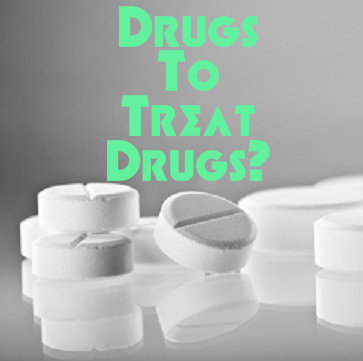 Researchers across the U.S. are investigating the potential usefulness of a number of existing medications as treatments for people affected by cocaine addiction. Medications currently being studied directly in human beings include disulfiram (Antabuse), normally used in alcoholism treatment; modafinil (Provigil), typically used in the treatment of sleep apnea or narcolepsy; and topiramate (Topamax), normally used to control seizure activity and previously adapted for alcoholism treatment. The National Institute on Drug Abuse (NIDA) reports that the most consistent positive results have come from disulfiram. In addition to these adapted medications, some researchers are exploring the possibility of developing a cocaine vaccine that could prevent the drug from producing its characteristic mind-altering effects.
Researchers across the U.S. are investigating the potential usefulness of a number of existing medications as treatments for people affected by cocaine addiction. Medications currently being studied directly in human beings include disulfiram (Antabuse), normally used in alcoholism treatment; modafinil (Provigil), typically used in the treatment of sleep apnea or narcolepsy; and topiramate (Topamax), normally used to control seizure activity and previously adapted for alcoholism treatment. The National Institute on Drug Abuse (NIDA) reports that the most consistent positive results have come from disulfiram. In addition to these adapted medications, some researchers are exploring the possibility of developing a cocaine vaccine that could prevent the drug from producing its characteristic mind-altering effects.
In the absence of proven medications, most cocaine treatment programs rely on behavioral therapies that achieve their beneficial effects by helping recovering addicts change the ways in which they think and react in the presence of internal and external cues associated with drug use. Common options here include cognitive behavioral therapy (CBT) and contingency management. In CBT, people recovering from cocaine addiction learn to identify the thoughts and emotions that support drug use, then go on to learn how to replace those thoughts and emotions with alternatives that don’t support the urge to use cocaine. Contingency management promotes basic program compliance and goal setting by financially or materially rewarding recovering addicts for following program rules and reaching important treatment milestones.
What Is Baclofen?
Baclofen is a chemical relative of a substance that occurs naturally inside the brain. In the treatment of severe muscle spasms, it produces its beneficial effects by slowing down the rate of nerve cell activity in the spinal cord (which, along with the brain, forms the central nervous system). Specific ailments improved by this slowdown include multiple sclerosis and certain spinal cord problems that trigger contractions in the body’s skeletal muscles. Baclofen is widely available as a generic, unbranded medication and comes in tablet form.
Usefulness In Preventing Relapses
Current scientific evidence indicates that, even after extended periods of drug-free living, a recovering cocaine addict can experience chemical reactions in the brain that trigger drug cravings in the presence of internal or external cues previously associated with drug intake. In the face of these cravings, many people in recovery relapse back into drug use. In the study published in The Journal of Neuroscience, researchers from the University of Pennsylvania, Wake Forest University and the Veterans Administration explored the usefulness of baclofen in preventing the chemical changes in the brain that support cravings and relapse. During the study, 23 men addicted to cocaine received either doses of baclofen or a placebo designed to mimic the medication’s appearance. These men ranged in age from 18 to 55.
One week into the study, the researchers used modern scanning technology to examine the participants’ real-time changes in brain function while they viewed cocaine-related imagery at a pace too rapid to register in conscious awareness. Effectively, these rapidly presented images recreated the types of subliminal drug cues that can trigger drug intake in both active users and recovering addicts. When they compared the brain reactions of the baclofen users to the reactions of other study participants, researchers found that the baclofen users showed a substantially lower level of activity in the brain areas responsible for triggering pleasurable sensations and increasing motivation. Normally, increased activity in these areas helps drive the urge to use more drugs.
Based on their findings, the authors of the study published in The Journal of Neuroscience believe that baclofen can help block the subliminal drug-using cues that support the onset of relapse in people recovering from cocaine addiction. However, their work did not include clinical testing of the medication’s ability to prevent drug cravings and relapse in real-world conditions. They point toward a need for further research to investigate baclofen’s effectiveness in such conditions.
Find Out How Alcoholics Respond To Baclofen
Buprenorphine is an opioid medication approved in the early 2000s as a treatment for people addicted to both legal and illegal opioid substances. This medication has a proven record of effectiveness, but current evidence indicates that doctors don’t often prescribe it to their opioid-affected patients. In a study published in March 2014 in the journal Substance Abuse, researchers from five U.S. institutions sought to determine how many people that use/abuse an IV (intravenous) opioid drug are aware of buprenorphine as a treatment option. These researchers also assessed IV opioid users’ willingness to participate in buprenorphine-based treatment.
What Is Buprenorphine?
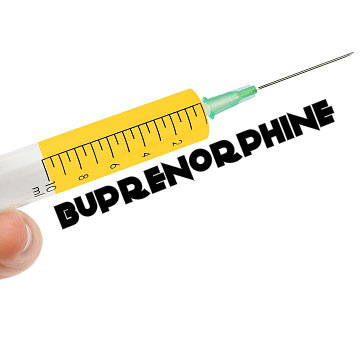 It might seem strange that a doctor would prescribe an opioid medication to help a person affected by opioid addiction; however, buprenorphine does not produce its effects as rapidly as heroin or other commonly abused opioids (or the opioid medication methadone); in addition, the medication has a relatively low maximum level of effect, and people who keep using it after reaching this level will not get any more “high.” In combination, these qualities make buprenorphine suitable as either a short-term or long-term option for people addicted to stronger opioids that enter treatment. Essentially, use of the medication makes it possible for recovering addicts to avoid uncontrolled substance intake while simultaneously avoiding the highly distressing symptoms of complete opioid withdrawal. One commonly used prescription product, called Subutex, contains only buprenorphine. Another commonly used product, called Suboxone, contains both buprenorphine and a second medication (naloxone) that effectively decreases the risks for buprenorphine abuse.
It might seem strange that a doctor would prescribe an opioid medication to help a person affected by opioid addiction; however, buprenorphine does not produce its effects as rapidly as heroin or other commonly abused opioids (or the opioid medication methadone); in addition, the medication has a relatively low maximum level of effect, and people who keep using it after reaching this level will not get any more “high.” In combination, these qualities make buprenorphine suitable as either a short-term or long-term option for people addicted to stronger opioids that enter treatment. Essentially, use of the medication makes it possible for recovering addicts to avoid uncontrolled substance intake while simultaneously avoiding the highly distressing symptoms of complete opioid withdrawal. One commonly used prescription product, called Subutex, contains only buprenorphine. Another commonly used product, called Suboxone, contains both buprenorphine and a second medication (naloxone) that effectively decreases the risks for buprenorphine abuse.
Effectiveness And Access Of Buprenorphine
Numerous studies have verified the effectiveness of buprenorphine and buprenorphine/naloxone as treatments for opioid addiction and opioid dependence (a state of physical reliance that does not include the dysfunctional symptoms of addiction). In addition, unlike methadone, which can only be administered to patients in a fairly small number of sanctioned clinics, any doctor who obtains a mandated ID number from the U.S. Drug Enforcement Agency can prescribe buprenorphine and buprenorphine/naloxone. This means that, theoretically, people affected by opioid addiction can get buprenorphine-based treatment in a far greater number of locations than they can gain access to methadone. Thousands of doctors across the U.S. have gone through the training needed to properly prescribe buprenorphine and buprenorphine/naloxone and have also registered with the DEA.
Awareness Among IV Opioid Users
In the study published in Substance Abuse, researchers from Johns Hopkins University, the City University of New York, the Albert Einstein College of Medicine, the Montefiore Medical Center and New York Harm Reduction Educators used an examination of 158 IV opioid users in New York City to assess how many such users know about buprenorphine as a treatment option for opioid addiction. All of these users were participants in a syringe exchange program. In addition to gauging basic awareness among these individuals, the researchers used interviews to determine how many people had received some form of buprenorphine and how many people displayed a willingness to try the medication or learn more about it. The researchers also looked for any connection between established familiarity with buprenorphine and the willingness to use the medication.
All told, the researchers found that most of the study participants (70 percent) had heard about buprenorphine as a possible treatment option. Roughly one-third of the participants (32 percent) had first-hand knowledge of someone who took buprenorphine, while another third (31 percent) had second-hand knowledge of someone who took the medication. Only 12 percent of all the individuals enrolled in the study had received buprenorphine themselves. When the researchers asked the 138 participants with no personal history of buprenorphine use if they were curious about using the medication, more than half of these individuals (57 percent) replied in the affirmative. Upon further investigation, the researchers concluded that curiosity about buprenorphine use was basically limited to those participants with second-hand knowledge of the medication.
The authors of the study published in Substance Abuse note that the opioid users enrolled in their project were among those that may be overlooked by programs offering treatment for opioid addiction. Even still, most of these individuals knew about the medication and many showed a willingness to learn more about it or possibly use it as a treatment option. The study’s authors believe that public health officials should explore the interest shown by those IV opioid users with second-hand knowledge of buprenorphine as a potential inroad for eventually making active treatment with the medication more widespread.
Read More About Successful Buprenorphine/Naloxone Treatment For Opioid Addiction
Heroin use has exploded, a national survey on drug use reveals, growing from 373,000 yearly users in 2007 to an estimated 669,000 in 2012. This alarming substance abuse trend highlights the need for drug rehab and for strategies that reduce heroin’s harmful impact. One of those strategies is the distribution of a medication called naloxone, which reverses the effects of heroin overdose.
Naloxone, also known by the brand name Narcan, is a non-narcotic drug that works by binding certain opioid receptors in the brain. Approved by the FDA in 1971, naloxone reverses sedation and respiratory suppression, heroin’s primary life-threatening effects. It can be administered via an injection, usually given in the upper arm or thigh, or as a nasal spray. After it’s been administered, the medication takes effect as quickly as five minutes or less. Naloxone is considered safe and nontoxic, and it doesn’t produce a pleasurable high when used. This medication treats overdoses from heroin and other narcotic drugs, including codeine and oxycodone.
Administering naloxone is a harm-reduction technique, which means it’s not necessarily intended to stop heroin use. Instead, its purpose is to reduce the harmful and potentially lethal impact of a heroin overdose. While death is, of course, the most serious consequence of overdosing on opioids, brain injury from oxygen deprivation is a very serious concern as well.
Heroin users who overdose are at risk for long-term health issues, ranging from coordination problems to communication difficulties. In severe overdose cases, the result can be a vegetative state. Brain injury damages both the physical and emotional well-being of the addict, but it also negatively impacts the well-being of his or her loved ones. Treatment of an overdose-related brain injury is expensive as well. If the addict is unable to pay for needed medical care, the community will end up bearing the burden.
Who Can Give Naloxone?
Naloxone has been available for years to emergency medical technicians, ambulance crews and emergency room personnel. However, in recent years, perhaps fueled by the increase in heroin use, public health officials have pushed to make it more widely available to other first responders. For example, naloxone is now carried by police officers in several communities, including one in New Mexico and five in Massachusetts.
The challenge, however, is that heroin overdoses sometimes result in injury or death before first responders arrive or before the drug user reaches an emergency room. This has spurred some public health officials to advocate putting naloxone directly into the hands of addicts, their loved ones and concerned friends. In fact, in 2012, the American Medical Association (AMA) announced its support of offering naloxone through community-based programs. This would allow the bystanders of an overdose to administer the potentially life-saving medication. Some states have already moved to make naloxone more widely accessible. For example, Washington State allows drug users, family members and concerned friends to carry the medication.
What Are The Benefits Of Naloxone?
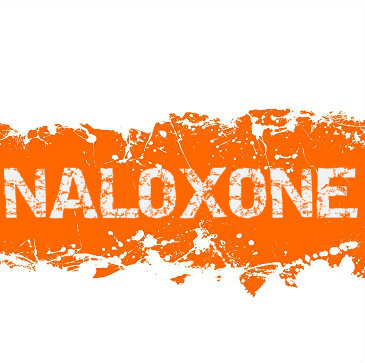 The potential benefits of naloxone are significant, and include the following:
The potential benefits of naloxone are significant, and include the following:
The drug saves lives. Research shows that using this medication reduces the number of deaths from opioid overdoses. A published study, which examined Massachusetts communities where first responders carried naloxone, reported 327 rescues from 2006 to 2009. The communities that had higher levels of training for naloxone use reported a nearly 50 percent reduction in opioid overdose fatalities. Those with lower levels of training had an approximate 30 percent lower death rate.
Naloxone is relatively inexpensive. A nasal spray naloxone kit costs in the ballpark of $25. This is extremely inexpensive when compared to the potential cost of brain damage or death due to a heroin-induced overdose.
It can be administered with minimal training. Naloxone, whether it is in injectable or nasal spray form, is easy to administer to someone who has overdosed on heroin or other narcotic drugs. Instructions are typically provided with the medication to help someone at the scene know when it’s time to give it and how to prepare the dose. For those who want to learn more about how to give naloxone properly, training is available through many community-based programs or from physicians familiar with the drug.
What Are The Downsides Of Naloxone?
Although the benefits of using Naloxone for opioid overdoses are impressive, use of the medication is not without its downsides. Negative aspects include the following:
The medication usually must be administered by someone else. By the time a heroin user needs naloxone, he or she is already likely unconscious. Naloxone is most effective when there’s a sober bystander able to watch for signs of overdose and administer the medication as quickly as possible. Unfortunately, many addicts use when they’re alone or with others who are also using. A sober bystander often isn’t anywhere in the vicinity. By the time someone does come onto the scene, it may be too late.
It doesn’t counteract the effect of other drugs. Naloxone only works for opioid overdoses, which means it has no impact when a person has ingested alcohol or substances like cocaine, benzodiazepines (such as Xanax or Valium), or methamphetamines.
Naloxone triggers withdrawal. Because the medication quickly reverses heroin’s effects, the user experiences withdrawal symptoms. These feelings are intense and uncomfortable; however, they’re not life-threatening. Perhaps the most dangerous aspect of withdrawal is that the heroin user will have a compelling urge to get high again.
The medication’s effects are temporary. Naloxone begins to wear off after 30 minutes, and most of it is gone after 90 minutes. However, a heroin high lasts from two hours in addicted users and up to six hours in new users. When the naloxone dose wears off, there may still be enough heroin in the body to reinitiate the high. If the original dose of heroin was large enough, respiratory suppression and sedation could start again. This would make an additional dose of naloxone necessary.
Bystanders may not call for help because they fear trouble with law enforcement. Loved ones or drug-using friends are sometimes highly reluctant to reach out to responders, even when those responders are armed with the potentially life-saving naloxone. This is often because they don’t want the person who’s using to get into legal trouble.
Some oppose its use. As with other harm-reduction strategies, such as needle exchange programs, there are always those who oppose its use. Critics charge that naloxone makes heroin users less likely to seek drug rehab because they no longer fear the consequences of an overdose.
Heroin abuse and addiction are serious community concerns. An overdose can lead to tragic and permanent consequences. While drug rehab treatment and abstinence are always the ultimate goals, it’s also important to address and reduce the harm done by drug abuse. Although it has its downsides, naloxone is a safe way to decrease the physical, emotional and financial impact of heroin overdose.
Read More About Successful Buprenorphine/Naloxone Treatment For Opioid Addiction
Addiction to opioid drugs, like heroin, is a terrible disease and one that is difficult to overcome. Even with the best treatment and addiction professionals, coming clean from opioids and staying clean is a huge challenge. The impact that these drugs have on the brain and the body is so strong that it takes a major effort to stop using them. For this reason, researchers have worked on developing medications to help addicts. One such drug is Suboxone and it can help heroin and other opioid addicts stay sober. However, as an opioid itself, this medication can also be abused.
Withdrawal Symptoms Of Opioids
One of the main reasons quitting opioid drugs is so difficult is the severity of withdrawal symptoms. Taking addictive drugs repeatedly leads to changes in the brain. An addict needs the drug simply to feel normal again. When an opioid addict goes off his drug, he will experience anxiety, agitation, insomnia, achiness, sweating and a runny nose in the early stages. As withdrawal progresses, the symptoms get worse and include cramps, diarrhea, nausea and vomiting. These symptoms are extremely uncomfortable and lead many addicts to start using again.
What Is Suboxone?
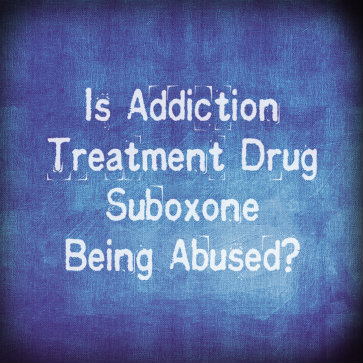 Suboxone is a drug with active ingredients called buprenorphine and naloxone. Together these ingredients reduce the symptoms of withdrawal from opioid drugs. When an addict gets relief from the terrible symptoms of withdrawal, he is more likely to stay sober. There are a few risks associated with taking Suboxone, and potential side effects such as cold-like symptoms, sweating and headaches.
Suboxone is a drug with active ingredients called buprenorphine and naloxone. Together these ingredients reduce the symptoms of withdrawal from opioid drugs. When an addict gets relief from the terrible symptoms of withdrawal, he is more likely to stay sober. There are a few risks associated with taking Suboxone, and potential side effects such as cold-like symptoms, sweating and headaches.
Suboxone has been proven by research to be effective in helping opioid addicts stay clean. In one study, nearly half of the addicted participants using Suboxone were able to reduce their use of narcotic opioid painkillers. The success rate dropped to below 10 percent when the participants stopped using Suboxone.
How Is Suboxone Able To Be Abuse?
Although it is an opioid, just like narcotic painkillers and heroin, Suboxone’s impact on the brain is much less than the more addictive drugs. However, there is still the potential for abuse. Another opioid that has been used to treat heroin addicts for decades, methadone, has a much greater potential for abuse than Suboxone. As a result, methadone is tightly controlled. Suboxone can be prescribed in a doctor’s office and the addict can take it home. This more lax approach to dispensing Suboxone leaves the door open for abuse.
Overdose And Death From Suboxone?
Furthermore, because regulations are not as tight as with methadone, many users don’t realize that it is possible to overdose and die from taking too much Suboxone.
Recent reports in the news illustrate the problems associated with Suboxone. Although it can help addicts get clean, it is clear that some people are abusing it and using it to get high rather than to stay sober. In New York, people have been arrested recently for trying to sell Suboxone. Not only are addicts being prescribed the drug abusing it, it’s also entering the illicit marketplace and being sold to non-addicts looking for a high. Arrests have also been made in Virginia and other states.
Drugs like Suboxone are important for helping people who desperately want to stop using heroin and other opioids. However, no error-free drug has yet been developed. As long as there is any possibility of getting high on a medication, the drug will be abused by someone. Doctors need to take great care in prescribing these medications and policy makers must consider whether restrictions need to be tightened to prevent further abuse.
Read More About Buprenorphine Treatment For Opioid Addiction
07 Feb 2014
What’s Involved In Ultra Rapid Detox?
Detoxification, the process of waiting until your body has eliminated all of a drug from your system, can be a very difficult time. As your body detoxifies, you may experience uncomfortable, painful, and even dangerous symptoms. The fear of going through this is a roadblock for many addicts. Some treatment specialists have tried to develop a quick and painless detox process to help their patients. While their intentions may be good, trying to get through detox too quickly may present its own problems. Before you consider any rapid detox, make sure you understand the risks.
What Is Ultra Rapid Detox?
Detox is no fun for any type of addict, but for those hooked on opioids, the pain and discomfort associated with detoxing can be overwhelming. In fact, it is best for anyone detoxing from these drugs to be cared for by a loved one at the very least and by a medical professional whenever possible. Because the symptoms can be so severe, not all addicts make it through. Many turn back to drugs to get relief.
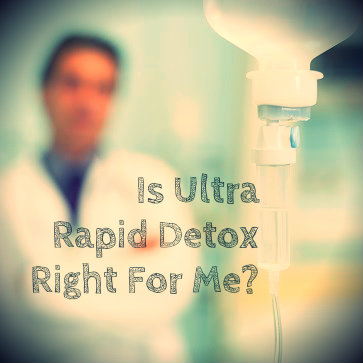 To increase the odds of a successful detox, the process of ultra rapid detox was developed by clinicians. Patients undergoing this process are put under anesthesia for anywhere between two hours and two days. During that time, medical caregivers administrate medicines to the patient that help to quickly flush the drugs from his system. The hope is that the patient wakes up having completed detox without feeling any withdrawal symptoms.
To increase the odds of a successful detox, the process of ultra rapid detox was developed by clinicians. Patients undergoing this process are put under anesthesia for anywhere between two hours and two days. During that time, medical caregivers administrate medicines to the patient that help to quickly flush the drugs from his system. The hope is that the patient wakes up having completed detox without feeling any withdrawal symptoms.
Does Ultra Rapid Detox Work?
Some patients and their doctors will claim that an ultra rapid detox worked. However, the research does not back up that conclusion. Randomized studies have shown that using anesthesia along with medications to quickly detox works no better than other detox methods. Many patients undergoing ultra rapid detox still experience withdrawal after the procedure is complete, and the rates at which they stay sober weeks after are comparable to other types of techniques.
Are There Any Dangers Associated With An Ultra Rapid Detox?
Not only is an ultra rapid detox not necessarily more successful than other techniques, it also carries some risks. In one study of ultra rapid detox techniques, 3 patients out of 35 experienced serious health consequences as a result of the treatment and needed to be hospitalized. While most patients undergoing this treatment will not experience anything so serious, the possibility exists.
What is more likely to happen with ultra rapid detox, and of serious concern, is that patients may not receive any other kind of treatment. There is no quick fix for addiction, but many who receive this type of care believe it is all they need to get sober and to stay sober. Detox, no matter how it is done, is only the first step in recovery from addiction.
Should I Consider Ultra Rapid Detox?
If you are considering this type of medically assisted detox, speak with your doctor about it first. You also have another option, called rapid detox. With a rapid detox, you will be mildly sedated, but not to the extent that is needed for ultra rapid detox. If you are seriously considering either type of procedure, make sure you understand the risks and that detox is just one part of a complete treatment plan. Be sure to include a stay at a rehab facility, counseling sessions, support group meetings and other tried-and-tested recovery support to ensure the best odds of success.
Read More About Detox Programs For Addiction


